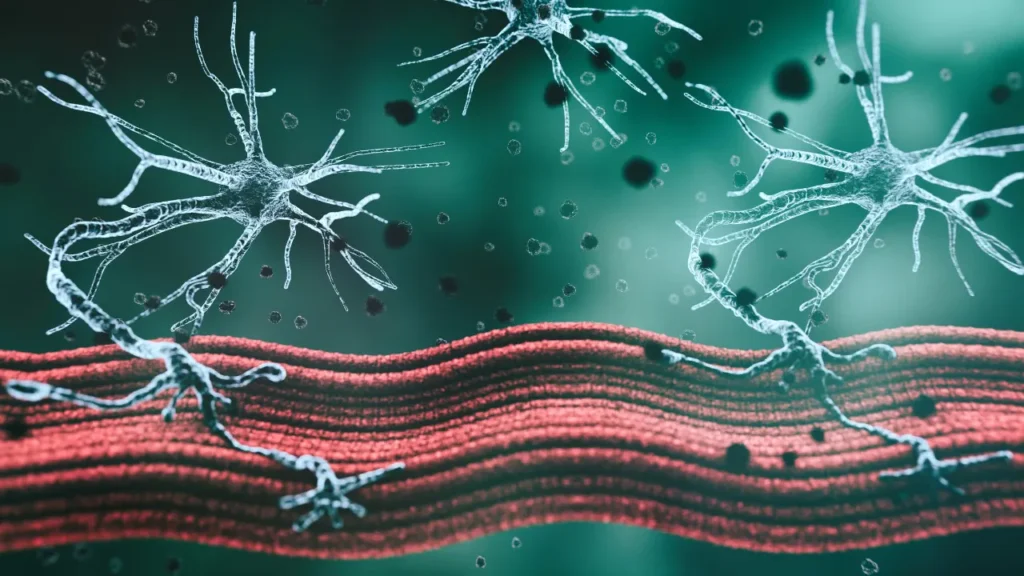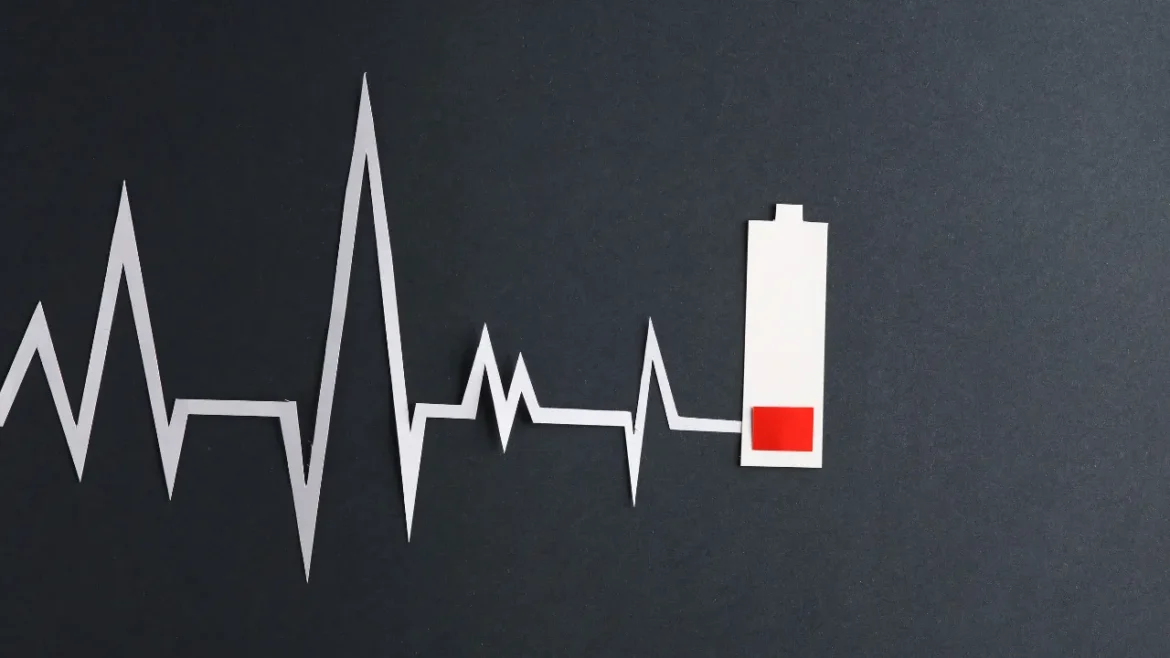Description
An uncommon autoimmune illness called autoimmune autonomic ganglionopathy (AAG) has been defined as autonomic nerve system dysfunction. The autoimmune autonomic neuropathies as a whole include it. The autonomic ganglia are erroneously attacked and damaged by the body’s immune response, which leads to AAG and interferes with the autonomic nerve system’s regular operation.
AAG can manifest clinically in many different ways, and its symptoms can range in intensity from moderate to severe. Typical signs of AAG include the following.
Gastrointestinal Dysmotility
Impaired digestion results in symptoms like bloating, stomach pain, vomiting, nausea, diarrhea, or constipation.
Orthostatic Hypotension
Standing causes a reduction in blood pressure, which might cause fainting, lightheadedness, or dizziness.
Pupillary Abnormalities
Adjustments in the pupils’ size and how they react to light stimulation.
Urinary Dysfunction
Urinary retention, inadequate bladder emptying, or incontinence due to abnormal bladder activity.
Sudomotor Symptoms
Abnormalities of perspiration that cause either excessive perspiration (hyperhidrosis) or less perspiration (anhidrosis).
Dry Mouth and Eyes
Decreased tear production, dry mouth (xerostomia), and dry eyes (keratoconjunctivitis sicca).
Cardiovascular Symptoms
Irregular heartbeat, palpitations, inability to exercise, or unusual swings in blood pressure.
You May Also Like:
NEURODERMATITIS: DESCRIPTION, CAUSES, AND TREATMENT PROTOCOL
OLLY GOODBYE STRESS GUMMIES REVIEWED: A LEADING STRESS RELIEF PRODUCT
Autoimmune autonomic ganglionopathy (AAG) / autoimmune dysautonomia | autoimmune gastrointestinal dysmotility (AGID): Description, Causes, And Treatment Protocol is an original (HealthXWire) article.
Possible Causes
It is unclear what exactly triggers AAG. Nevertheless, numerous factors are linked to the emergence of this autoimmune illness. The following are some possible reasons for AAG: –
Autoimmune Response
The immune system’s erroneous targeting of autonomic ganglia components during an autoimmune reaction is thought to be the cause of AAG. Ganglionic acetylcholine receptors (gAChRs) or nicotinic acetylcholine receptors (nAChRs) within the autonomic ganglia constitute the targets of autoantibodies. The normal operation of these receptors is hampered by these autoantibodies, which causes autonomic malfunction.
Malignancies
AAG has occasionally been linked to underlying cancers like small-cell lung carcinoma or neuroblastoma. According to a theory, tumor cells produce antigens that interact with autonomic ganglia, triggering an autoimmune reaction that targets both the ganglia and the tumor.
Viral Infections
AAG development has occasionally been linked to viral infections. Numerous viruses have been linked to the disease, including the herpes simplex virus (HSV), Epstein-Barr virus (EBV), and varicella-zoster virus (VZV). The onset of AAG is thought to result from these viral infections in susceptible people by inducing an autoimmune reaction.
Genetic Predisposition
AAG is one of the autoimmune disorders that may be genetically predisposed to. The likelihood that someone will acquire AAG may be influenced by specific hereditary variables. Investigations are still ongoing on the particular genes implicated and their modes of operation.
Environmental Triggers
Environmental elements have been suggested as potential AAG causes, like exposure to specific poisons or chemicals. But there is still much to learn about the precise environmental factors and the mechanisms through which AAG develops.
Exacerbating and Mitigating Factors
The treatment for autoimmune autonomic ganglionopathy (AAG) takes both aggravating and mitigating factors into consideration. Individuals with AAG may be better able to manage their symptoms and enhance their standard of life if they have a greater awareness of these issues. The following list of AAG-related aggravating and mitigating factors is typical.
Exacerbating Factors
Physical Exertion
Overexertion or physically demanding activities might cause or aggravate autonomic symptoms. AAG patients should exercise regularly but should not exert themselves too much. Exercise regimens that are gradual and moderate are often advised.
Stress
Stress on the body and mind can make symptoms worse for people with AAG. Stress management measures, therapy, or stress-relieving activities may assist to reduce your symptoms.
Medications
In people with AAG, some drugs may make autonomic symptoms worse. These include drugs having well-known autonomic adverse effects, such as certain antihistamines, decongestants, or blood pressure-lowering drugs. To prevent symptoms from worsening, it is crucial to explore drug options with medical professionals.
Heat Exposure
A rise in body temperature may render autonomic dysfunction worse. It is crucial for people with AAG to stay away from hot settings, saunas, and hot baths. Utilizing cooling techniques, like air conditioning or cooling towels, may prove beneficial.
Mitigating Factors
Avoidance of Triggers
It is critical to recognize and stay away from triggers that exacerbate symptoms. These triggers may include particular foods, specific environmental factors, or certain behaviors that worsen autonomic dysfunction. Maintaining a symptom journal can help you pinpoint specific triggers.
Rest
Making sure you get enough rest and have restful sleep will assist with AAG symptoms. Maintain a sleep-friendly atmosphere and setting up a regular sleep schedule may be helpful.
Cool Environments
Keeping the atmosphere chilly helps lessen the effects of autonomic dysfunction. To produce a comfortable environment, cooling equipment, fans, and air conditioning systems can be used.
Lifestyle Modifications
Keeping up with a nutritious diet, regular physical activity, and stress management skills can improve general well-being and possibly lessen the severity of symptoms.
Hydration
Orthostatic hypotension symptoms may be controlled by drinking plenty of water. Water in particular should be consumed in sufficient amounts throughout the day.

Standard Treatment Protocol
The conventional course of treatment for AAG often employs a multidisciplinary strategy and concentrates on immunomodulation to stifle the autoimmune response along with symptomatic care to ease the numerous autonomic manifestations. The following are typical therapies applied to the therapy for AAG.
Immunomodulatory Therapies
Intravenous Immunoglobulin (IVIG)
It is possible to modify the immune system and enhance autonomic function with high-dose IVIG infusions. Several days are frequently spent administering this treatment, which is then continued on a regular basis.
Corticosteroids
The immunological response may initially be suppressed by using prednisone or methylprednisolone. It is frequently required to gradually reduce the dosage to reduce negative effects.
Plasmapheresis
When other therapies have failed or the condition is severe, plasma exchange, which includes eliminating autoantibodies from bloodstreams, may be helpful.
Symptomatic Treatments
Cholinesterase inhibitors
Drugs like pyridostigmine may enhance neuromuscular transmission and relieve symptoms of gastrointestinal dysmotility.
Alpha-adrenergic agonists
Orthostatic hypotension, a frequent symptom of AAG, can be treated by raising blood pressure with drugs like midodrine or droxidopa.
Beta-blockers
Metoprolol or propranolol can be administered to lower heart rate and treat tachycardia or palpitations signs.


Treatment Options
Numerous adjunct therapies might be taken into consideration as an addition to the regular treatment plan to potentially increase the effectiveness of traditional treatments. It is vital to remember that these complementary therapies must be considered and utilized only under the supervision of qualified healthcare providers. The following therapies have potential, but more study is required to determine their efficacy in AAG.
Prescription Medications
Immunosuppressive Agents
To further inhibit an autoimmune reaction in refractory situations, doctors may consider using drugs like rituximab, mycophenolate mofetil, or azathioprine.
Symptom-Specific Medications
According to the main symptoms, drugs that target particular manifestations, like alpha-adrenergic agonists regarding orthostatic hypotension or anticholinergic treatments for gastrointestinal problems, may be helpful.
Over-the-Counter Formulations
Nonsteroidal Anti-inflammatory Drugs (NSAIDs)
Ibuprofen and naproxen, two NSAIDs, may offer momentary relief from some symptoms including pain or inflammation. Nevertheless, care should be taken to prevent any possible interactions with prescribed drugs.
Nutritional Supplements
Antioxidant Supplements
Vitamins E and C, alpha-lipoic acid, and selenium are antioxidants that help shield cells from oxidative damage and may be helpful in autoimmune illnesses.
Vitamin D
For general wellness, adequate vitamin D levels are crucial. There may be a connection between autoimmune diseases and vitamin D insufficiency, according to certain studies. Supplementation might be thought about, although a specific dose is advised.
Omega-3 Fatty Acids
Omega-3 fatty acids are present in fish oil and have anti-inflammatory properties. Their management of AAG, nevertheless, is still unclear.
Coenzyme Q10
The immunomodulatory properties of this antioxidant supplement might assist with autonomic function. The dosage and effectiveness of AAG have yet to be established.
Natural and Herbal Remedies
Turmeric
The anti-inflammatory properties of curcumin, a substance found in turmeric, are strong. It may support the body’s immune system in modulating reactions and reducing inflammation.
Licorice Root
Studies on the possible immunomodulatory and anti-inflammatory properties of licorice root have been conducted. Glycyrrhizin, which is a substance discovered to have anti-inflammatory qualities, is present in it.
Ginseng
Due to its possible anti-inflammatory and immune-modulating effects, ginseng is a herb with adaptogenic qualities that have historically been utilized in herbal therapy. Immune responses may be regulated, and overall health may be enhanced.
Astragalus
Because of its ability to boost the immune system and reduce inflammation, astragalus is a plant that is frequently utilized in conventional Chinese medicine. It might support general health and immune system modulation.
Before beginning any adjunct therapy, it is essential to speak with a healthcare provider in order to guarantee your safety and the therapy’s effectiveness, and to reduce any possible interactions with standard therapies. The therapy for AAG requires individualized treatment approaches according to the extent of manifestations, comorbidities, and preferences of patients.


Conclusion
To manage autoimmune autonomic ganglionopathy effectively, it is crucial to balance caution and optimism. The condition has the potential to create significant challenges, affecting various bodily functions, so caution is vital. Following medical treatments and therapies as prescribed is essential to alleviate symptoms and prevent further deterioration, and maintaining open communication with healthcare providers is crucial.
While medical care is imperative, natural remedies like lifestyle adjustments, stress reduction techniques, organic supplements, and healthy practices offer optimism for additional symptom management and overall well-being. By embracing a holistic approach to self-care, individuals with autoimmune autonomic ganglionopathy can enhance their well-being and quality of life. Effective management requires a balance of proper medical management, natural remedies, and lifestyle changes. This combination can lead to a brighter future with improved symptoms and a sense of empowerment. While caution is necessary, there is also reason for optimism as individuals with autoimmune autonomic ganglionopathy can explore multiple avenues of symptom management.


Additional resources for further reference
https://my.clevelandclinic.org/health/diseases/22781-autoimmune-autonomic-ganglionopathy
https://rarediseases.org/gard-rare-disease/autoimmune-autonomic-ganglionopathy/
Important Note: The information contained in this article is for general informational purposes only, and should not be construed as health or medical advice, nor is it intended to diagnose, prevent, treat, or cure any disease or health condition. Before embarking on any diet, fitness regimen, or program of nutritional supplementation, it is advisable to consult your healthcare professional in order to determine its safety and probable efficacy in terms of your individual state of health.
Regarding Nutritional Supplements Or Other Non-Prescription Health Products: If any nutritional supplements or other non-prescription health products are mentioned in the foregoing article, any claims or statements made about them have not been evaluated by the U.S. Food and Drug Administration, and such nutritional supplements or other health products are not intended to diagnose, treat, cure, or prevent any disease.
Table of Contents


